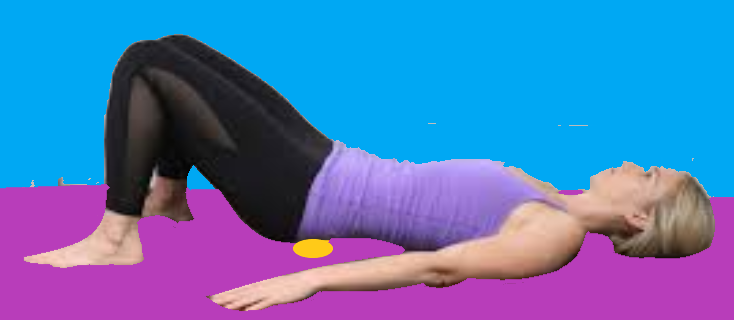Back Pain - DIY Tennis Ball Therapy for Pain Management
Tennis ball self-massage can be applied to any part of the body.
DIY muscle release techniques are very effective for rejuvenating and regenerating muscles affected by soft tissue imbalances. They can rehabilitate and restore the soft tissue structures to a healthy condition; preparing the muscles for movement and aiding recovery.
By using a few tennis balls and a sock, and using the correct simple moves it is possible to reach the deepest layers of muscle and connective tissue and release adhesions so muscles are able to fully stretch and contract. This could relieve discomfort, pain, and increase blood and lymph circulation. With the use of a pair of tennis balls it is possible to get relief.
The benefits of Tennis Ball Massage Therapy
DIY muscle release may:
increase joint range of motion
help muscle performance
decrease fatigue after exercise
decrease soreness after exercise
DIY muscle release is best after a workout; it can be performed whenever you can fit in throughout the day. It not occupy too much time and can fitted into a busy schedule. Just like stretching, the best results are seen after consistent practice.
Releasing trigger points can be painful and ache afterwards. The pain should be a satisfying type of pain, similar to a deep tissue massage.
Here are some rules to follow while practicing DIY tennis ball therapy:
1. Warm the muscles area beforehand.
2. When the point of tension is found hold the ball in place and keep sustained pressure the discomfort should be satisfying, not painful.
3. Breathe deeply, to oxygenate blood.
4. Stop if it does not feel right. This is always a good rule when exercising.
5. Stretch the muscle afterwards. This is always a good rule following massage
Back
Upper Back Release
The trapezius muscle (Trapz) is a large muscle that connects your upper back, neck, and
shoulders. It can often get tight and painful with overuse or stress. This can contribute
to neck and shoulder pain.
This routine can aide postural correction, an upper back tension reliever, and helps to
revive your breath.
There are 2 routines
Lying on the floor
1. Lie down on the floor and place two balls in a sock
on either side of your Thoracic (Ribs) spine
Interlace your hands behind your head and lift your
head off the floor, bringing your chin toward your
chest.
Lift your bottom off the floor, rest on the tennis
balls and take 3 deep breaths.
2. Keeping breathing deeply and steady, roll on the tennis balls up and down your
Thoracic (Ribs) spine for up to 5 minutes.
Stand against a wall
1. Stand with your back against a wall with a Tennis Ball between the wall and your
Thoracic (Ribs) spine; with the ball on one side
of your spine.
2. Move around in all directions until you find a
tender spot.
3. Using your body weight press the ball into wall
and
Cross your hands over your chest.
4. Roll up and down slowly on the ball, massaging any
knots or tender areas you may encounter.
5. Repeat on the other side.
Low Back Release
This routine can aide postural correction through massaging and relieving tension of the
that attach to the Lumbar spine in the lower back, the Quadratus Lumborum (QL’s),
Erector Spinae, Oblique muscles and Lumbodorsal Fascia, which attaches to the
latissimus dors (Lats) muscles
There are 2 routines
Lying on the floor
1. Lie down on the floor, placing two balls in a sock on
either side of your Lumbar spine area, between
your bottom and ribs.
Interlace your hands behind your head and lift your
head off the floor, bringing your chin toward your
chest.
Lift your bottom off the floor, so your Lumbar spine area is resting on the tennis
balls and take 3 deep breaths.
Breathe deeply while shifting your pelvis up and down so the balls roll your entire
lower back.
2. Move the ball more slowly in the areas where you feel stiffer, and lighten your
pressure when you're near the spine so that you're not pinching the balls into your
spine as you move up and down the Lumbar spine area.
3. Breathe deeply as you roll for up to 5 minutes.
Stand against a wall
1. Stand with your back against a wall with a Tennis Ball between the
wall and your Lumbar spine area; with the ball on one side of your
spine.
2. Move around in all directions until you find a tender spot.
3. Using your body weight press the ball into wall and
Cross your hands over your chest.
4. Roll up and down slowly on the ball, massaging any knots or tender areas you may
encounter.
5. Repeat on the other side.





